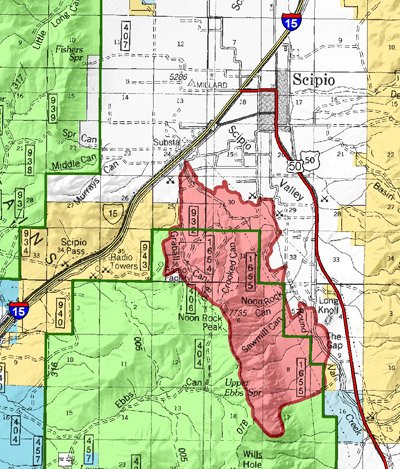When I worked in southern California it was commonly accepted as fact that a mosaic of different age classes of chaparral would prevent fires from becoming large, or at least slow down fires, making effective fire suppression possible. It was thought that fires would reach an area that had burned in the last 1 to 25 years and would stop, or at least be easier to suppress when it reached the younger fuels.
But research by Jon Keeley of the USGS, Sequoia-Kings Canyon National Park, and others, indicates that it is unlikely that age class manipulation of fuels can prevent large fires. The details are in his papers HERE and HERE, and in a brief article by John McKinney HERE.
Keeley’s data shows that in southern California over the last 130 years there has been no change in the occurrence of fires larger than 25,000 acres (10,000 ha). He found that of the eight “megafires” recorded that were larger than 123,000 acres (50,000 ha), they burned through a mosaic of age classes, raising doubts that the accumulation of old ages classes explains these events.
Keeley’s paper reveals that Santa Ana winds were factors in six of the eight megafires, blowing for the first one to four days, and extreme fire weather, including “extreme temperatures, low humidity, and erratic winds” were factors for the other two megafires, the Zaca and Wheeler 2 fires.

It is still hard for me to give up the idea that fuel age does not have a significant effect on fire size and resistance to control. Is it not true that older chaparral has a higher live-to-dead ratio and more tons per acre of fuel?
It makes sense that most of the megafires are wind-driven, at least for the first one to four days. This comes as no surprise to anyone that has fought fire in southern California. The concept that 20-60 mph winds can drive a brush fire through almost any age class of vegetation is not surprising. We have seen it.
After a strong Santa Ana wind pushes a fire for 5 to 20 miles, the fire is so huge with such a large perimeter that it will continue to spread under average weather conditions and takes many days to contain.
Perhaps vegetation management which produces a mosaic of age classes will not prevent fires from becoming large, but Keely does concede that it may have some value:
Fuel treatments may be a barrier to fire spread under benign weather, and under more severe weather, provide access and anchor points for fire fighting activities. They also contribute to reduced flame lengths and provide defensible space around urban developments. Thus, attention needs to be given to their most strategically useful placement on the landscape, so that they are cost effective. In addition to their monetary cost, fuel treatments have potential negative impacts on resources (Keeley 2005, Ingalsbee 2006), and thus they need to be done judiciously. Application of fuel treatments beyond the wildland-urban interface zone may have tactical value, but much research is still needed on the most costeffective placement of these treatments.
Thanks Dick





